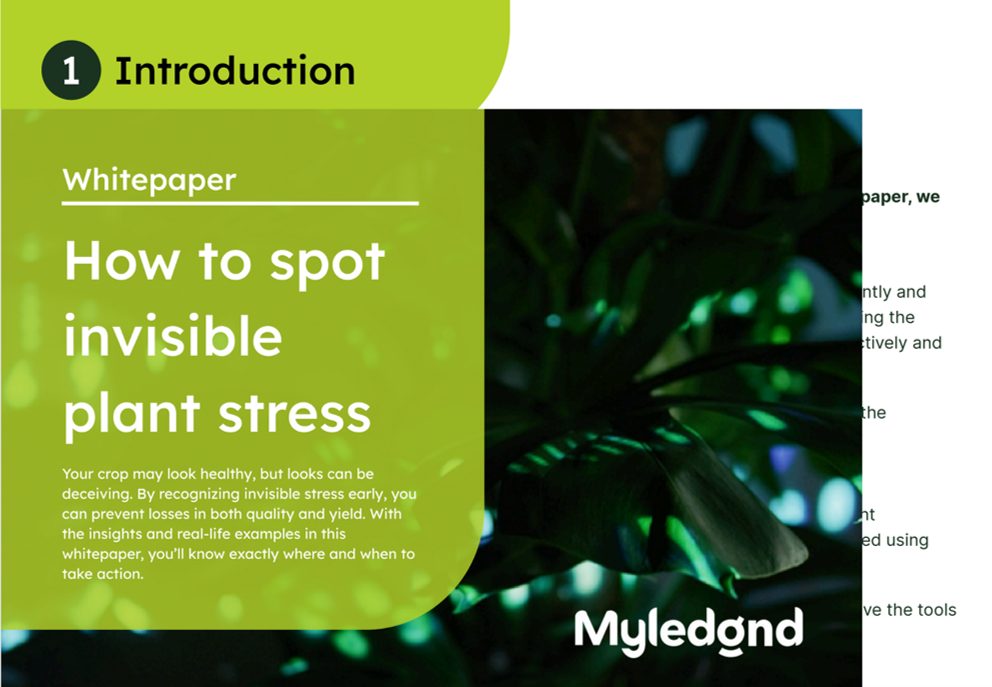Which plant feedback systems are there?
Greenhouse horticulture is undergoing a transformation: we are moving from climate controlled greenhouses to plant driven greenhouses. This means that we are steering based on the crop’s real time needs, measured with plant feedback systems or sensors. Thanks to the new generation of plant feedback systems, growers now have insight into the physiological condition of their crops.
Where we used to focus mainly on environmental factors like temperature, light, and CO₂, the emphasis is now shifting toward how the crop actually responds to these factors. After all, a high PAR value means little if the plant is not using the light efficiently. Plant feedback systems provide insight into what is truly happening inside the plant, whether it is photosynthesis, stomatal activity, or stress signals. In this way, we move from simply recording data to understanding it, and ultimately to smarter control.
In this article, we discuss four plant feedback systems that provide real time data on plant health.
Cf2Go from Phenovation
The Cf2Go is a contactless sensor from Phenovation that can measure photosynthetic efficiency in real time. The sensor not only registers the classic Fv/Fm value (maximum photosynthetic efficiency), but also NPQ(t), which provides valuable insights into how efficiently a plant can dissipate excess energy by converting it into heat without causing cellular damage. Additionally, using the Fv/Fm value and PAR, it is possible to calculate the light stress at any given moment in the light deviation graph. The sensor also offers T/Fm measurements, which can detect stress in plants up to an hour earlier than the light deviation graph.
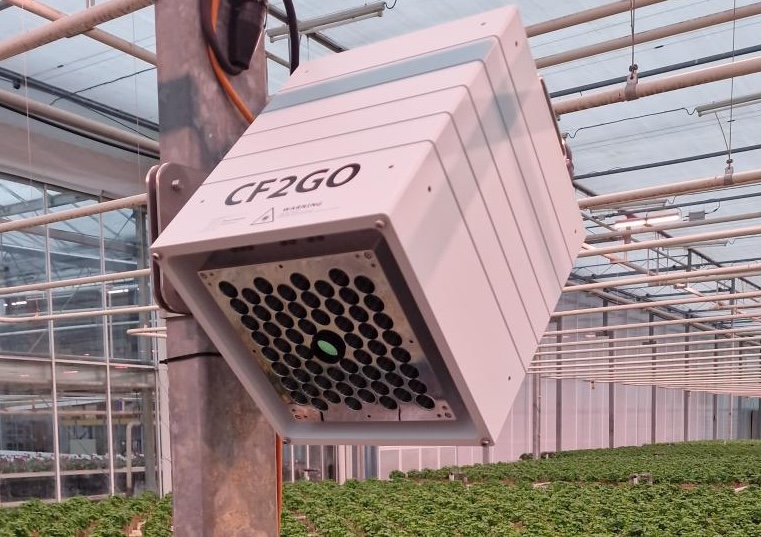
CF2GO Technology
The Cf2Go uses short blue light flashes. This light is absorbed by the plant, after which the sensor measures the reflected chlorophyll fluorescence. This fluorescence data provides an indication of photosynthetic efficiency and is measured every minute, allowing you to catch every stress moment as it happens. The Cf2Go performs accurate measurements at distances of up to 100 cm from the plant.
Photosynthesis efficiency sensor from Sendot
The photosynthesis efficiency sensor from Sendot provides insight into how efficiently the crop converts available light into sugars. The sensor measures photosynthetic efficiency (Fv/Fm) in real time at the leaf level. This makes it possible to respond quickly to stress factors such as overexposure or a lack of CO₂. When combined with a PAR sensor, it allows for calculating whether the light reaching the leaf is actually being used effectively.
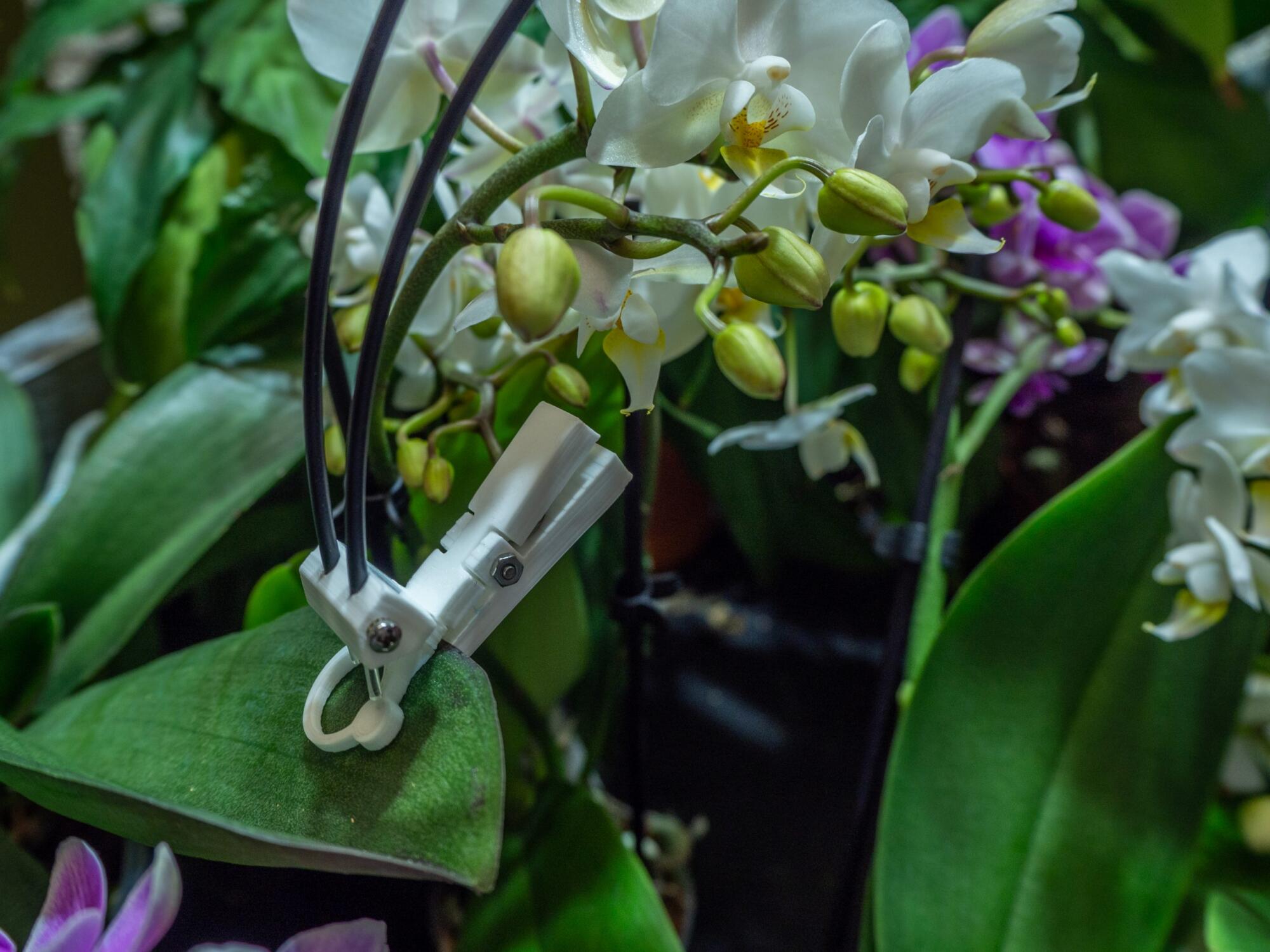
Sendot Photosynthesis efficiency sensor technology
The sensor is attached directly to a leaf using a fiber optic cable and operates based on chlorophyll fluorescence. Short light pulses are directed at the leaf, and the sensor then measures the reflected fluorescence to determine the photosynthetic efficiency (Fv/Fm).
2Grow Sap Flow and stem diameter sensors
2Grow offers two sensors that directly measure how the plant transports water and how the stem diameter behaves in real time. The sap flow sensor provides insight into the amount of water taken up and moved through the plant, which is a direct indication of transpiration and root activity. The stem diameter sensor measures microscopic changes in stem thickness, which reflect the plant’s water balance and whether it is expanding or shrinking. These measurements offer valuable insights into the type of growth the plant is undergoing, whether it is more vegetative or generative—and whether the plant has struggled to grow.
2Grow Technology
Vivent Biosignals Biosensor
The biosensor from Vivent measures electrical signals in the plant, also known as biopotentials. These signals provide real time insight into how the plant responds to changes such as shifts in light, irrigation, nutrient additions, or other environmental factors. This is determined through advanced models that translate the rhythm of the biosignals into specific stress indicators, such as water or nutrient deficiencies.
Technology Vivent Biosensor
The biosensor uses electrophysiological technology, with two electrodes attached to the plant. These electrodes register microvolt signals generated by internal voltage changes within the plant. Through advanced modeling, this data is translated into valuable plant feedback insights for the grower.
Whitepaper How to Recognize Invisible Plant Stress
Growers who steer based on data, achieve better yields and save costs at the same time.
Our latest whitepaper shows how top growers use sensors and MyLedgnd to detect stress early and manage crop health more effectively.
In this whitepaper you will learn:
- Practical case studies of invisible plant stress
- The different types of plant stress
- Which stress signals you might be missing
- The consequences of stress and how to prevent it
Download Download the whitepaper and discover how your crop is really performing.
New articles
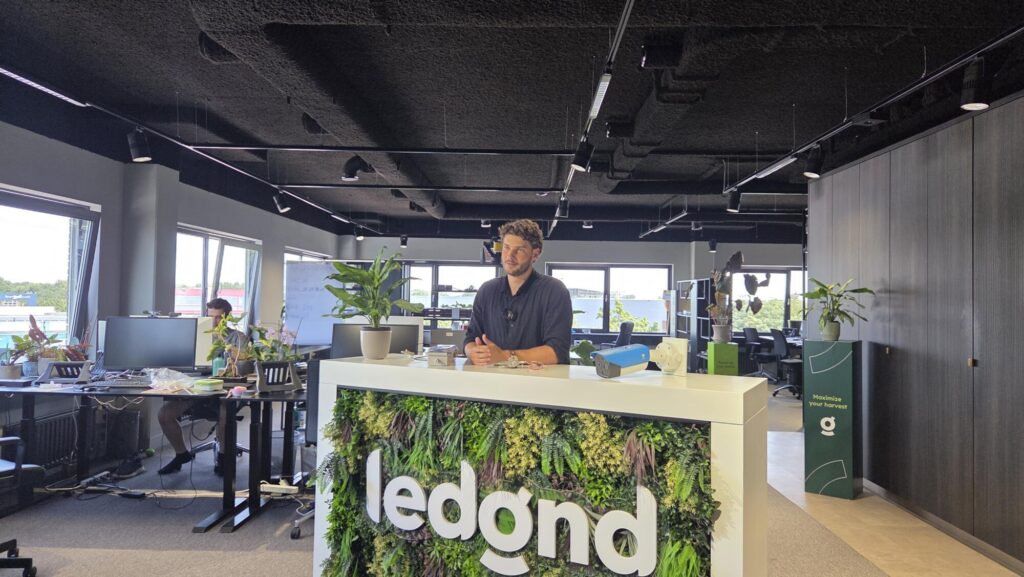
How 2025 became the year of plant feedback, sustainability and collaboration
2025 was a year of contrasts for many growers: rising costs and stricter regulations, while at the same time more opportunities than ever to gain control of the crop using data. At Ledgnd, the year wa…
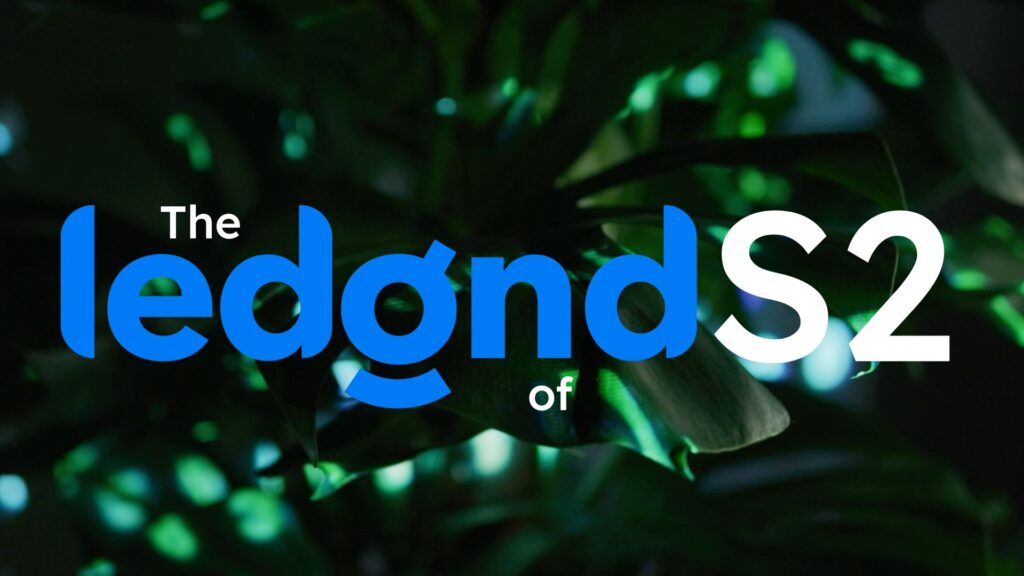
Ledgnd launches season 2 of video series “The Ledgnd of”
Ledgnd has launched the second season of its video series “The Ledgnd of”. The series takes a closer look at the key concepts and innovations shaping modern greenhouse horticulture. In the new season,…

Ledgnd at Hortibiz Next Level Data: From data to action
During the theme week “Next Level Data, Artificial Intelligence and Robotics” by Hortibiz News Radio, Ledgnd joined the table to talk about one key question: how do you turn all greenhouse data back i…
Read more

How 2025 became the year of plant feedback, sustainability and collaboration
2025 was a year of contrasts for many growers: rising costs and stricter regulations, while at the same time more opportunities than ever to gain control of the crop using data. At Ledgnd, the year wa…

Ledgnd launches season 2 of video series “The Ledgnd of”
Ledgnd has launched the second season of its video series “The Ledgnd of”. The series takes a closer look at the key concepts and innovations shaping modern greenhouse horticulture. In the new season,…

Ledgnd at Hortibiz Next Level Data: From data to action
During the theme week “Next Level Data, Artificial Intelligence and Robotics” by Hortibiz News Radio, Ledgnd joined the table to talk about one key question: how do you turn all greenhouse data back i…
Do you want to know more?
Interested in what Ledgnd can do for you? Leave your phone number, and we will contact you as soon as possible for a non-binding informational conversation

